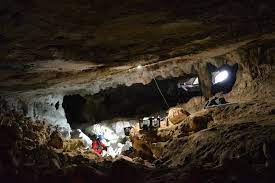A team of researchers based in Andalucía have analyzed ancient human DNA from several archaeological sites. Their findings include reports on the oldest genome to date from Cueva del Malalmuerzo in southern Spain, as well as 7,000- to 5,000-year-old genomes of early farmers from sites such as Cueva de Ardales.
The Iberian Peninsula is an important part of the history of human population reconstruction. It is considered a refuge during the last Ice Age by some scientists, while others speculate it might have been one of the starting points for the recolonization of Europe after the glacial maximum. Previous studies show genomic profiles of 13,000- to 8,000-year-old hunter-gatherers that occupied the Iberian Peninsula. These profiles provided evidence of survival and continuation of an older Paleolithic lineage that is no longer detectable.
In Andalucía, climate conditions are similar to those in North Africa, which makes it a challenge to extract DNA due to the hot and dry climate. Remarkably, the DNA of 14,000-year-old humans from a cave site in Morocco were successfully recovered. This discovery provided the necessary information for scientists to directly investigate the role of the Iberian Peninsula as a refuge for humans that lived during the Ice Age and potential population contacts across various areas.
The genetic ancestry of humans from central and southern Europe who lived before the Last Glacial Maximum varies from the ones who recolonised Europe afterwards. The situation in western Europe was not clear until now due to a lack of genomic data from critical time periods. The 23,000-year-old individual from Cueva del Malalmuerzo provides data from the time when large parts of Europe were covered by massive ice sheets. The study shows a direct genetic link between a 35,000 year old from Belgium and the new genome from Malalmuerzo. The high quality of the data also enabled scientists to detect traces of one of the first genetic lineages that settled Eurasia 45,000 years ago. Similarities between a 35,000 year old from Belgium and a 23,000 year old individual from southern Iberia were found.
The human from Cueva del Malalmuerzo also belonged to the hunter-gatherers of southern and western Europe who lived long after the last Ice Age. The study confirms the important role of the Iberian Peninsula as a refuge for human populations during the last Ice Age. With Malalmuerzo, scientists were able to trace a Paleolithic human group back to one of the proposed Ice Age refugia. This long-lasting genetic legacy on the Iberian Peninsula is remarkable, “especially since this pre-Ice Age ancestry had long since disappeared in other parts of Europe,” adds senior author Wolfgang Haak of the Max Planck Institute for Evolutionary Anthropology.
The findings of this study also relates back to a number of younger individuals from the Neolithic. The genetic ancestry of Anatolian Neolithic groups is detectable in the humans from Andalucía, proposing that these early farmers spread over large geographic distances.
Through this study and the history-changing findings, the Iberian Peninsula’s role during the Ice Age is able to be traced and still resonates thousands of years later.
Oldest Human Genome found in Southern Spain
December 13, 2023








